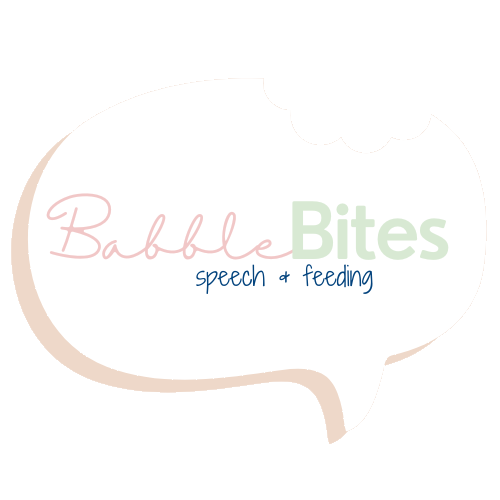When Should I Start Solid Foods With My Baby?
For the optimal start, begin solids when your baby is showing readiness signs.
Many parents are excited by the idea of starting solids with their baby. Parents often hear to start sometime between 4-6 months of age, but don’t know that there are specific skills their baby should be showing in order to have an optimal start to their baby’s solid food journey.
How do I know my baby is ready to start solids?
You will know your baby is ready to be introduced to solids when they:
Are able to sit upright
Babies should have good trunk control when in a supported sitting position when starting purees/mashed foods
Babies should be able to sit independently or with minimal assistance when transitioning to soft solids
Have head control and are able to hold their head upright for at least 15 minutes (the length of a meal)
Can grab toys and bring them to their mouth
They show an interest in food, such as watching you eat, leaning forward towards food, and/or opening their mouth for food
If your child is not yet exhibiting these readiness signs around 6 months of age, speak with your child’s team (e.g. pediatrician, SLP/feeding therapist, OT, PT) to determine when and how to introduce solid foods to your little one.
Understanding the Right Time for Purees and Soft Solids
Some parents choose to start their solids journey with pureed/mashed foods, while other parents want to do baby-led weaning and go straight to soft solids. It’s important to recognize the different skills that are required for these two different textures of food. Babies need to be sitting independently, or with minimal assistance in order to have enough core stability to control soft solids, while you can start purees/mashed foods once your baby has good trunk control as long as they’re in a supported seating position.
Knowing that many babies do not sit independently until 7-8 months, and that there is a critical window of time to introduce baby to a variety of textures and flavors between 6-9 months of age, I generally recommend starting with puree/mashed foods alongside hard munchables once baby is showing all readiness signs and sitting up well when supported (usually at 6 months). This will ensure that starting solids is not delayed, and gets baby introduced to new flavors, as well as helps them learn to create and swallow a more solid bolus (ball of food) in their mouth. This also allows them to have positive first experiences with foods, as they’re developmentally ready for the food that is offered to them. I then generally recommend starting to introduce meltable solids, and soft mashable solid sticks and pieces as soon as possible (usually around 7-8 months). This timeline will not work for all babies and families, but for many families, this allows them to not delay introduction of solids until baby is sitting up independently, and introduces chewable textures during the critical window of 6-9 months of age so that baby does not get stuck on purees.
Why were we told to start solids between 4-6 months?
Many parents are told that it is recommended for babies to start solids between 4-6 months of age, though this is an outdated recommendation. As of now, the American Academy of Pediatrics and World Health Organization recommend introducing solids when your baby is around 6 months of age and showing the readiness signs listed above. When you first introduce solids, it should be complementary to human milk or formula until at least 12 months of age. Newer research suggests that baby’s gut is not ready for solid foods until 6 months of age and could pose health risks later on. Additionally, most babies do not exhibit all of the readiness signs for starting solids until around 6 months.
What can I do to help get my baby ready to start solid foods?
Using stick shaped teethers can help get your baby ready for starting solids.
Stick Shaped Teethers
One way to get your baby ready for starting solids is to introduce stick shaped teethers from 3-6 months of age. These teethers help activate your baby’s tongue lateralization and biting reflexes so they will have a better understanding of how to handle food when it’s introduced. It also helps with other readiness skills, like bringing objects to their mouth.
Tummy Time
Tummy time is super important so your baby continues to strengthen their neck and core muscles in order to be stable while eating.
Sitting
Practicing sitting will help your baby increase their stability and independence with sitting in order to safely manage food and advanced textures in their mouths. Practice sitting in the high chair, as well, so they are not introduced to their high chair and food for the first time at the same time! Let them sit in their chair and provide teethers while they watch you eat. This is also a good time to see if your baby needs extra support in the high chair, such as rolled towels, to make sure they are fully supported when you do offer food.
Eating in front of baby
Eating in front of your baby is so important so they can start learning about food, how to chew, and becoming interested in what you’re eating! Even if baby isn’t eating foods yet, it’s still so valuable to include them in meal times. Try to get them interested in the sounds different foods make when you bite into them, the smells of foods, and even how you cook.
Happy eating!
Need some guidance for starting solids? Check out my blogs Part 1 and Part 2 for starting solids.
Do you live in the Palm Beach Gardens, FL area and want some guidance on starting solids? Click here to learn more about my parent coaching services. Interested in feeding therapy? Click here.
Follow us on Instagram for “bite-sized” information on each blog post
This website and information on this blog post is provided for educational purposes only. It is not meant as medical advice, intended to replace a speech-language or feeding assessment, therapy from a speech-language pathologist, or serve as medical or nutritional care for a child. It is recommended that you discuss any concerns or questions you might have with your speech-language pathologist, pediatrician, and medical team, and develop an individualized team plan specifically for your child.













